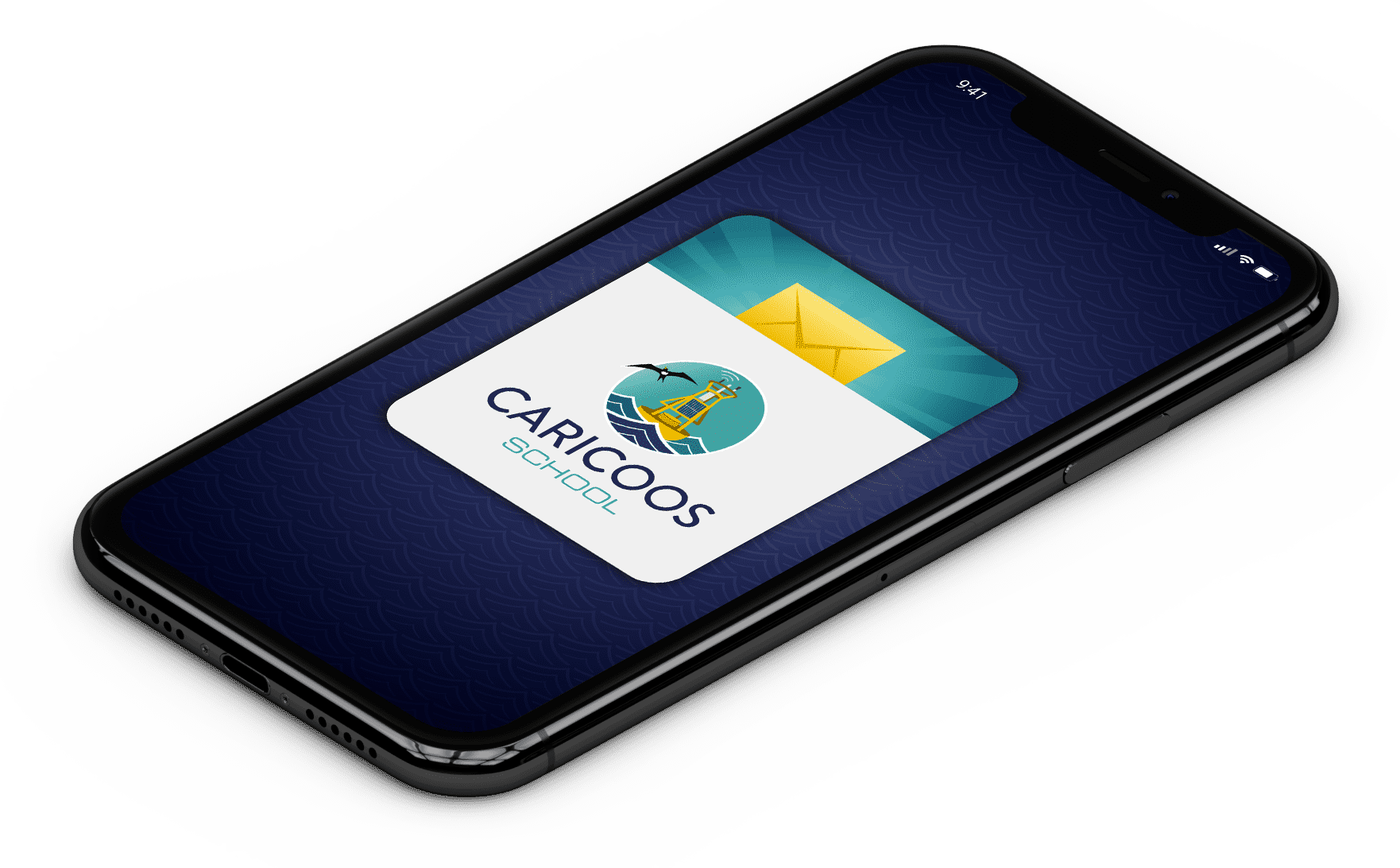
CARICOOS is the Caribbean Coastal Ocean Observing System

Interns
CARICOOS is dedicated to encouraging and training the next generation of coastal ocean experts. Thanks to all interns for being part of our development and expansion. We wish you all the best in your future endeavors.
Engineering
-
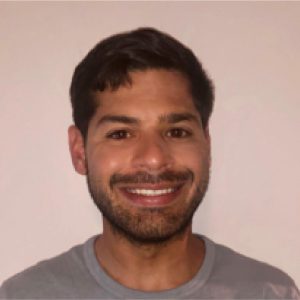
André Amador
While pursuing an undergraduate degree in engineering, he collaborated with CAOSE and CARICOOS in the design and development of miniature-instrumented drifters equipped with inertial measurement units to probe the hydrodynamics of breaking waves. He also assisted in calibrating and maintaining High-Frequency Radar stations, as well as nearshore water quality climatological products for the Jobos Bay National Estuarine Research Reserve, Puerto Rico. André recently completed a Ph.D. in Applied Ocean Science and Mechanical Engineering at UC San Diego. He is currently working for the Coastal Observing Research and Development Center at Scripps Institution of Oceanography. As NOAA UxS California Cooperative Oceanic Fisheries Investigations (CalCOFI) project lead, his research focuses on advancing data collection capabilities for unmanned systems to enable new modes of observational research in remote marine environments.
-
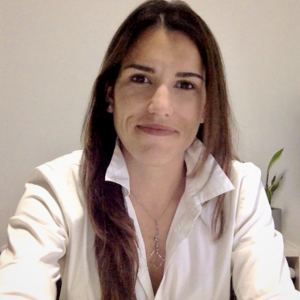
Patricia Chardón Maldonado
While pursuing an undergraduate and graduate degree in Civil Engineering at the University of Puerto Rico-Mayagüez, she assisted CARICOOS and Sea Grant Puerto Rico in understanding the hydrodynamics and sediment transport processes in coastal areas through data collection and the use of high-resolution morphodynamic models. Patricia completed a Ph.D. in Coastal Engineering at the University of Delaware. She currently serves as Deputy and Technical Director of CARICOOS and is a researcher at the University of Puerto Rico-Mayagüez. As director, she supervises all technical and administrative aspects of CARICOOS, including numerical modeling and observational efforts. As a researcher, she combines field and numerical modeling research to enhance our understanding of nearshore and coastal morphodynamics and nearshore-water-land interactions.
-

Sylvia Rodríguez-Abudo
Sylvia Rodriguez-Abudo was born and raised in Puerto Rico, where she received a BS in Civil Engineering, with a concentration in Environmental Engineering at the University of Puerto Rico-Mayaguez (2007). She was part of CARICOOS at its early beginnings when she worked as an undergraduate researcher under the mentorship of Prof. Julio Morell. She later pursued graduate studies earning a master's degree in Ocean Engineering from the University of New Hampshire (2011), followed by a Ph.D. in 2014 in the same discipline. Dr. Rodriguez-Abudo is currently an Associate Professor in the Department of Engineering Science and Materials at UPRM, where she teaches Coastal Engineering, Wave Dynamics, and Fluid Mechanics courses, and directs the Coastal Boundary Layers Laboratory. Her research group investigates the physical processes affecting and shaping the coastal ocean. Her work is done through laboratory and field experiments, and in collaboration with numerical modelers. She has been funded by NOAA, the Puerto Rico Science, Technology and Research Trust, and the DoD, among others. She is also an NSF-CAREER awardee. She has served as the Deputy Director of the Caribbean Coastal Ocean Observing System, Coordinator of the UPRM’s Research Academy, as well as several committees at the departmental, deanship, and university levels. She is also a proud mother of an 8-year-old girl and an adequate owner of a dog and a turtle.
-
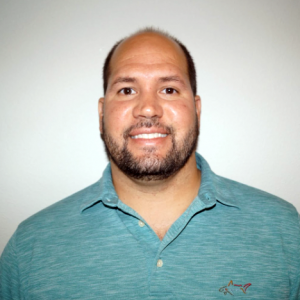
Omar López
As an undergraduate student of the Civil Engineering Department, he supported CARICOOS in the collection of surf zone drifter’s data, waves and currents modeling, installation of ocean sensors, and provided assistance coordinating the logistics of installation and maintenance of buoys. In addition, he performed beach profiles and participated in CARICOOS sedimentation surveys and analyses. Omar completed his master’s degree in Ocean Engineering and is currently a Ph.D. candidate at the Stevens Institute of Technology. He currently works as an engineer in the company Waterfront Engineer where inspects, designs, and supervises the construction of structures in front of bodies of water.
-
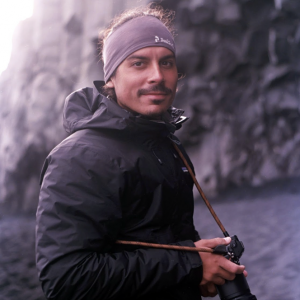
Carlos García
Carlos obtained a bachelor's degree in Electrical Engineering with a focus on Power Systems, with a particular interest in renewable energy resources. As a graduate student, he provided support to the different remote observation platforms operated by CARICOOS (High-Frequency Radars, buoys, and wind sensors) and focused his research work on the quantification of wave energy resources around Puerto Rico and the US Virgin Islands. In addition, he dedicated part of his time to developing operational products in order to visualize ocean surface currents in real-time, using data collected by the CARICOOS High-Frequency Radar network. He currently works for the Scripps Institution of Oceanography as a Systems Engineer at the Coastal Observing Research and Development Center (CORDC). Among his notable projects is the use of X-Band radars for coastal hydrodynamic studies, responsible for the High-Frequency radar network in the southern California region, and is principally responsible for researching, developing, and integrating new data collection methods making use of autonomous platforms areas.
-
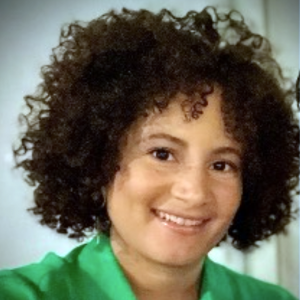
Nérida H. De Jesús Villanueva
Nerida H. De Jesus Villanueva has a degree in drafting from the Liceo de Arte y Tecnología, completed a Bachelor’s in Civil Engineering with Honors (Cum Laude), obtained a certificate in Environmental Engineering from the University of Puerto Rico- Mayaguez Campus (UPRM) and a Master’s in Science in Mechanical Engineering with a concentration in Bio/Micro-Scale Engineering. As an undergraduate student, she participated in ASCE National engineering competitions and was selected as a 3M scholar to participate in the Georgia Institute of Technology internship in Aquatic, Chemical, and Ecology REU. Her research experience includes working at the Environmental Engineering Laboratory-UPRM determining the concentrations of Volatile Organic Compounds (VOCs) and Phthalates in water as an undergraduate trainee for PROTECT; plus leading a research project as a recipient of the Greater Research Opportunity Fellowship from the Environmental Protection Agency (EPA) in 2014, “Identifying Sanitation System Ramifications on water quality for Rural Non-PRASA Communities in Puerto Rico”. She worked with CARICOOS on the project “Combined Effect of Ocean Acidification and Fluid Turbulence on Puerto Rico Coastal Barriers”. During her master’s she worked on developing a sensitive, autonomous, and efficient gas sensor microdevice to determine pollutant levels at the ppm scales by using LIFT methods to assemble the sensor and test nanowires in collaboration with the CREST Center at UPRRP-CIREN. Currently, she works at the Federal Emergency Management Agency (FEMA) as a Branch Chief of the Environmental and Historic Preservation (EHP) Division.
-
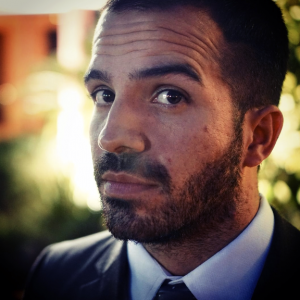
Miguel Solano
Miguel worked on building an operational forecasting ocean model based on the Regional Ocean Modeling System (ROMS) for Puerto Rico and the US Virgin Islands. He specializes in turbulence modeling and numerical discretization, and since graduating has expanded his expertise on realistic wind and tide forcing in high-resolution ocean models. Miguel completed his undergraduate studies in mechanical engineering at the University of Puerto Rico in 2012 and received his Ph.D. in thermal and fluid sciences at the University of Texas at Dallas in 2017. He has since worked 2 years at the Naval Research Laboratory (NRL) working on a Langmuir turbulence parameterization for the Navy Coastal Ocean Model (NCOM) and is currently studying nonlinear tide energetics in the Navy’s global Hybrid Coordinate Ocean Model (HYCOM).
-
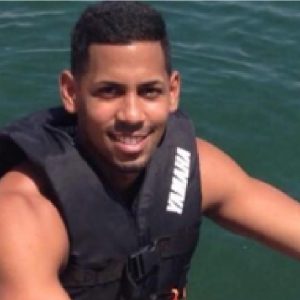
Christian A. Rojas Vázquez
He completed his master's degree in Civil Engineering at the University of Puerto Rico-Mayaguez. As a graduate student, he collaborated in the collection of bathymetry, wave, tide, and sediment data. He also assisted in the validation of numerical simulations that currently help us understand the hydrodynamics of our coasts and their effect on sediment transportation. As part of his research, he evaluated the Bajo Blanco sand shoal, located just offshore of Rincón beaches, as a possible beach nourishment borrow site for eroding beaches. Currently, he works as a coastal Engineer at SNC Lavalin - Atkins Global.
-
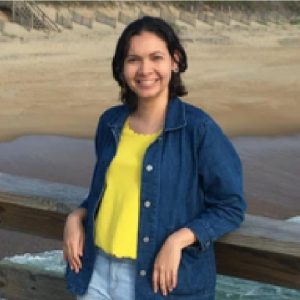
Gabriela Salgado
She graduated from the University of Puerto Rico at Mayagüez, completing a Bachelor’s and a Master’s degree in Civil Engineering. As a student, she studied beach morphology changes at Rincón due to storm surges, using RTK surveying technology and nearshore dynamic numerical modeling (with wave and current coupling). Since 2017, she has worked as a research hydraulic engineer at the Coastal and Hydraulics Laboratory of the US Corps of Engineers (USACE) Engineering Research and Development Center. As part of her job, she works with numerical wave models, such as FUNWAVE-TVD, to evaluate cases involving run-up, overtopping, harbor resonance, and ship wakes. Currently, Gabriela is a Ph.D. student in the University of Delaware Coastal Engineering program.
-
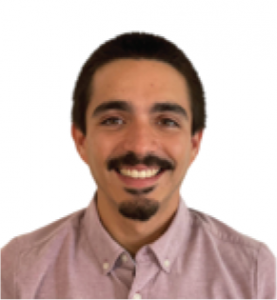
Peter Rivera
While pursuing his bachelor’s and master’s degree in engineering, he collaborated on water quality research projects. He helped develop predictive tools that were incorporated into the CARICOOS website and assisted with the maintenance of the database for water quality research projects. During his master's degree, he collaborated on the Hurricane Maria Rapid Response project, where topographic and bathymetric data were collected in order to analyze the recovery (if any) of the coast of Rincón after the hurricane. In addition, he assisted CARICOOS in the generation of 3D numerical models for currents, waves, and sediment transport. These models were used to simulate Hurricane Maria and Winter Storm Riley and to run the water quality simulations in the thesis project of graduate students. Peter Rivera is currently working for the Information Technology Lab at the US Army Corps of Engineering Research and Development (USACE ERDC ITL), where he develops Artificial Intelligence/Machine Learning tools.
-
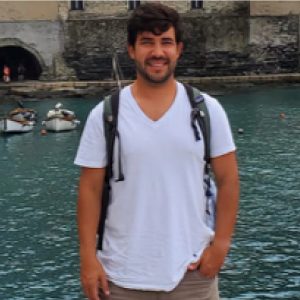
Edward Cruz-García
Edward completed a bachelor's and master's degree in civil engineering from UPRM. In addition, he has a master's degree in coastal engineering from the University of Pau and Pays de L'adour, Anglet Campus, France – College STEE. He has provided support to CARICOOS from the time he was an undergraduate student to the present. While an undergraduate student he worked on research that examined sediment transport on the coast of Rincon after Hurricane María. As part of this project, he analyzed topographic and bathymetric measurements and aerial images. In addition, he collaborated in the validation of the numerical model (DELFT 3D), which contributed not only to CARICOOS research projects but also to other research projects of graduate students of the Department of Engineering. He is currently working for CARICOOS in data analysis and providing support in the logistics of deployment and recovery of the buoys.
-
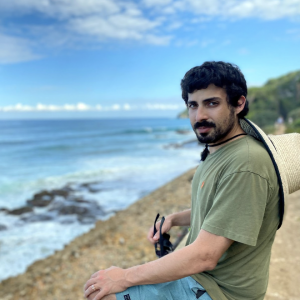
Fabián García
Graduated from the University of Puerto Rico at Mayaguez with a B.S. and M.S. in Mechanical Engineering with a concentration on Thermal and Fluid sciences. During his studies, he worked as an assistant researcher in CARICOOS, which gave him exposure to fields such as numerical modeling, oceanography, coastal engineering, programming, and data analytics. From these experiences, he got a keen interest in the physical processes that occur in the open ocean and how they transform as they move towards the nearshore. He is currently using what he learned with the CARICOOS team as a member of the Army Corps of Engineers.
-
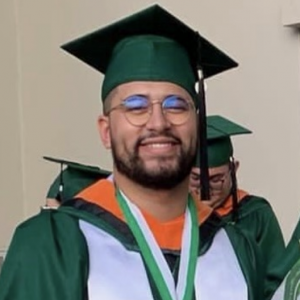
José Santiago Martínez
His curiosity about technology and electronics motivated him to study and complete a bachelor's degree in Computer Engineering from the University of Puerto Rico-Mayagüez. During his studies, he worked as a research assistant for CARICOOS supporting the management, analysis, and storage of oceanographic, meteorological, and biogeochemical data on servers, using tools such as RCode, ERDDAP, VirtualBox, etc. He is currently dedicated to programming CRM solutions under Microsoft (Dynamics 365).
-

Argelys Monserrate-Cid
Argelys obtained her bachelor's and master's degrees in Civil Engineering from the University of Puerto Rico Mayaguez Campus. As an undergraduate student, she assisted CARICOOS with the granulometric analysis of sand to interpret the morphological changes in the beaches of Rincón. Her master’s thesis focused on conducting an economic, social, and energy feasibility analysis considering recycling crushed glass as fill material on beaches as mitigation for erosion problems in Puerto Rico. She currently works as an engineer at CMA Architects and Engineers LLC; working on hydrological and hydraulic analyses, drainage modeling and site design, lining in coastal areas and rivers, and drinking and rainwater distribution systems.
-
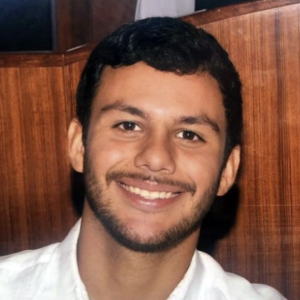
Daniel Martínez-González
Daniel began undergraduate research with CARICOOS in 2014 under the supervision of Dr. Miguel Canals. He completed his bachelor's degree in Mechanical Engineering in 2016. He completed much of his master's degree in the Mechanical Engineering department in the Fluid and Thermal program where he took an emphasis on coastal engineering and hydrodynamic modeling. During his graduate research and as part of his thesis, he developed a hydrodynamic model to study the circulation and coastal dynamics of a sector in the north of the island of Puerto Rico. Unfortunately, due to the passage of Hurricane Maria, his thesis project was affected and consequently, he decided to pause his graduate studies to accept a job offer with the U.S. Army Engineering Research and Development Center in Mississippi. Daniel Martinez currently offers his services as a contractor to various organizations of the Department of Defense (DoD) such as NASA and the Army where he specializes in the area of artificial intelligence (AI), High-Performance Computing (HPC), and computer engineering.
-

Priscila Vargas Babilonia
Priscila graduated from the University of Puerto Rico at Mayagüez with a Bachelor’s degree in Civil Engineering and a Master’s degree in Environmental and Water Resources Engineering. During her years as an undergraduate, she joined our team at CARICOOS and was involved in water quality research. For her Master’s thesis, she developed a predictive model of fecal bacteria at Rincón with the aim of understanding beach contamination on the island. After finishing her degree, she started collaborating as a student contractor with the U.S. Geological Survey (USGS) and the St. Petersburg Coastal and Marine Science Center on a coastal vulnerability assessment project in Puerto Rico. She is currently a Physical Scientist at USGS, St. Petersburg, Florida.
-
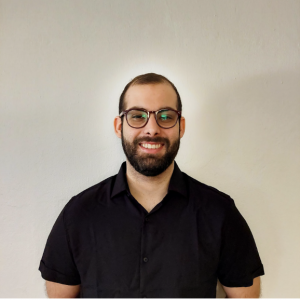
Diego Capre
Diego Capre earned his B.S. in Computer Engineering in 2019. He obtained his first research experience in the summer of 2018, as an internal student at CARICOOS. Under the advice of Dr. Jorge Capella, coordinator of DMAC, he worked on data verification from weather stations and buoys. In addition, he was responsible for ensuring that the data complied with the quality and format required for technical reports. This job opportunity empowered him with the knowledge and tools necessary to participate in other research opportunities under the direction of Dr. Sylvia Rodriguez. He currently works as an engineer at Honeywell Aerospace where he performs tasks related to the verification of the IC Design team.
-
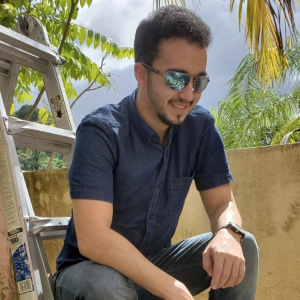
Ihan-Jarek Acevedo
Ihan-Jarek Acevedo is a native of Lares, Puerto Rico (PR). Being an islander, he grew up visiting the beaches and rivers of the Puerto Rico archipelago. Certainly, these experiences aroused in him his curiosity about how the things around him function or work. From there, he studied Civil Engineering at the Mayagüez Campus of the University of Puerto Rico (UPR-M). He worked as a CARICOOS intern student in research related to water quality in coastal areas and in others on the effect of waves on the behavior of water and sediments at relatively shallow depths. He participated in internships at Oregon State University and with the US Army Corps of Engineers where he researched topics such as coastal erosion in extreme wave events. His master's thesis in Environmental Engineering and Water Resources at URP-M focused on the efficiency of urban storm sewer systems. He currently works as an environmental engineer in a Puerto Rican company.
-
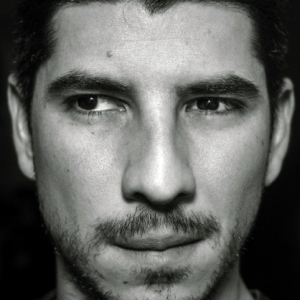
Elmer Armijo
Elmer obtained a bachelor’s in computer science from the University of Puerto Rico, Mayaguez Campus. As part of his experience in CARICOOS, he helped develop the web page with data analysis and programming, shortening the download time to access the webpage. Also, he assisted in preparing cartographic interactive products. Currently he works with the MITRE Corporation in projects for the Department of the Defense developing tools to analyze, visualize, and store data more efficiently.
Marine Sciences
-
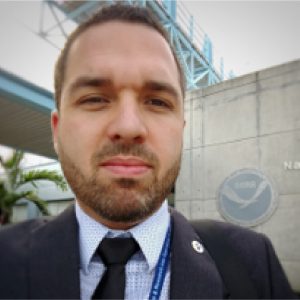
Ernesto Rodríguez
Ernesto completed a master’s degree in Physical Oceanography from the University of Puerto Rico, Mayaguez Campus. As a student and research assistant, he focused on numerical modeling associated with storm surges, tsunamis, and waves near the coast for CariCOOS. Currently, he is the Science and Operations Officer at NOAA National Weather Service - Weather Forecast Office (WFO) in San Juan, Puerto Rico where he ensures the scientific integrity of the hydrometeorological products and services provided to the public by the WFO and leads in joint research projects and developmental efforts. In addition, he oversees the transfer of new technologies from the research community to the operational environment, promoting the development of local forecast techniques. He also monitors and evaluates the accuracy and scientific basis of forecast and warning products and services provided by the WFO.
-
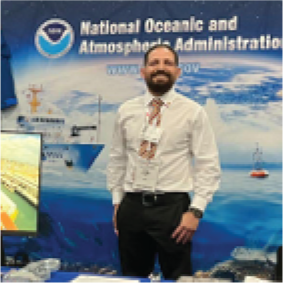
Carlos Anselmi
He completed a master’s degree in Physical Oceanography from the University of Puerto Rico, Mayaguez Campus. As a student and research assistant, he oversaw the validation, development, and operational implementation of the Simulating Waves Nearshore model (SWAN) that CARICOOS uses for wave forecasting and related impacts for Puerto Rico and the U.S. Virgin Islands. Currently, he is the Lead Meteorologist at DOC/NOAA/National Weather Service/Weather Forecast Office in San Juan, Puerto Rico. He is responsible for analyzing meteorological data from a variety of sources to prepare and issue forecast products, advisories, and warnings concerning a number of hazardous weather conditions, such as severe weather, high winds, flash floods, and storms.
-
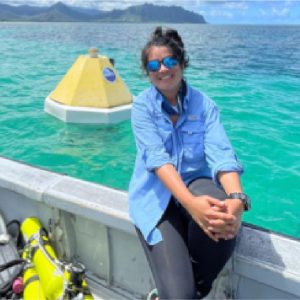
Melissa Meléndez
While pursuing a master’s degree in Chemical Oceanography at the University of Puerto Rico Marine Sciences Department, Melissa provided support in maritime operations for the installation and maintenance of the acidification buoy. In addition, she carried out laboratory analysis, sensor calibration, and coordinated activities to disseminate information on the impact of acidification on marine ecosystems. Melissa completed her Ph.D. in Chemical Oceanography at the University of New Hampshire. She is currently an Affiliate Research Faculty at the School of Ocean and Earth Science and Technology at the University of Hawai'i at Mānoa.
-
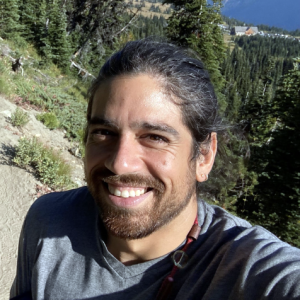
Luis Pomales Velásquez
As a master’s student at the Department of Marine Sciences at the University of Puerto Rico in Mayagüez, he assisted in the analysis and validation of CARICOOS circulation forecasts, and he served as a Seaglider (autonomous underwater vehicle) technician in the tropical cyclone strengthening project in collaboration with the Atlantic Oceanographic and Meteorological Laboratory (AOML). Currently, he is doing his doctorate in Physical Oceanography at the Graduate School of Oceanography (GSO) at the University of Rhode Island. Pomales uses Seagliders to study the changing acoustic propagation in the Arctic Ocean, making use of his developed skills as a technician and research assistant during his stint in CARICOOS.
-
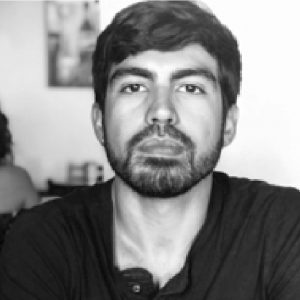
Erick M. García Troche
After obtaining a BSc in Chemistry from the University of Puerto Rico at Mayagüez, and completing a curricular sequence in Atmospheric Sciences and Meteorology, Erick completed a master’s degree in Chemical Oceanography. As a graduate student, he supported CARICOOS in chemical laboratory analysis and maritime operations. He worked with CARICOOS PI's and external researchers in the coordination of ocean acidification projects. Upon graduation, besides working as an Auxiliary Researcher at CARICOOS, he also worked as the Marine Research Program Coordinator at Bluetide Puerto Rico. Currently, Erick combines his scientific background with his experiences working for non-profit organizations in the development of new business projects.
-
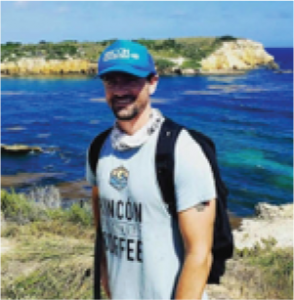
Colin Evans
His master’s thesis focused on High-Frequency Radar (HFR) wave measurements during Hurricane Matthew comparing it with directional and triaxys wave buoys, as well as with SWAN model outputs in the Mona Passage and southeast coast of Puerto Rico. The purpose of this research was to analyze and understand how the HFR performs in varying sea states during the progression of Hurricane Matthew as it passed south of Puerto Rico. Along with his Master’s research, as a CARICOOS research assistant, he has participated in the IOOS Significant Wave Height (SWH) project which focused on real-time HFR wave measurement comparisons compiled in monthly reports for the purpose of determining suitability for operational use. He is currently working as an assistant researcher for the CARICOOS regional association and recently finished a nearshore wave modeling project with the United States Geological Survey (USGS).
-
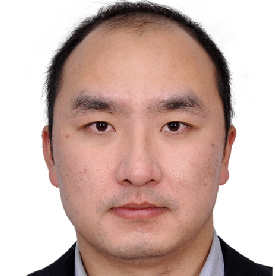
Haibo Xu
Haibo Xu is currently a Ph.D. student in the Department of Marine Sciences at UPRM. His research interests are focused mainly on ocean circulation modeling using the FVCOM model. As part of his research, he uses the model to identify mesoscale currents with great precision and therefore contributes to knowledge increase about the hydrodynamic processes of the region of Puerto Rico and US Virgin Islands. In addition, he conducts validations using field observations, data from Doppler current meters, tide gauges, and high-frequency (HF) radars. As part of his doctoral studies, he developed the Particle Tracking Model (PTM) to monitor particle dispersion, such as fish larvae, which has been very useful for managers part of the Caribbean Fisheries Management Council. The model evaluates the Marine Protected Areas larval recruitment effectiveness and determines possible sites where these processes can be carried out. On the other hand, as a result of the PTM, sargassum trajectories can be predicted using a combination of numerical modeling, satellite imageries, and surface drifters tracking. This allows for effective management responses, and thus, better mitigation actions.
-

Juan González
Juan started working with CARICOOS at the beginning when the first buoy at Ponce had not even been deployed. Initially, he worked with the implementation of the operational WRF atmospheric model and then moved into ocean modeling and operational data management efforts. As part of the research towards his MS in Physical Oceanography at the UPRM Marine Sciences Department, he worked on the development of storm surge coastal flood maps in a project funded by the Puerto Rico Department of Natural Resources. For the modeling used for these maps, he had the opportunity to get a thorough understanding of the ADCIRC+SWAN unstructured circulation-wave model, which sparked my interest in high-resolution modeling and high-performance computing. This led him to further pursue doctoral studies at the University of Notre Dame, where he worked developing a high-resolution unstructured mesh for Puerto Rico, the Virgin Islands, and the Eastern Caribbean. His main goal with this effort was to develop a high-resolution model capable of solving in detail the complex non-linear interactions of tides, water levels, currents, and waves for tidal, wind, and hurricane forcings.
After finishing his Ph.D. he returned to CARICOOS as a post-doctoral researcher, working on the implementation of a regional ROMS three-dimensional ocean circulation model. During this period as a postdoctoral researcher, Juan also helped with the supervision and training of students, collaborated in other research activities such as the coupling of storm surge and hydrology models, and led the migration of operational computing systems into the cloud. Currently, he works as a Senior Physical Oceanographer/Modeler with WSP in Canada, where he has been located for the past five years.
-
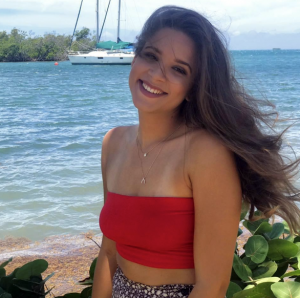
Priscilla Molina-Cora
After obtaining a certificate in tourism marketing, she completed an Associate Degree in Chemical Engineering Technology and a Bachelor's Degree in Technology and Industrial Chemical Processes from the Department of Physics-Chemistry of the UPRA. Currently, Priscila is pursuing a master's degree in Chemical Oceanography from the Department of Marine Sciences at UPRM. As a CARICOOS intern student, she processes samples for chemical analysis. As part of her research, she analyzes the biogeochemical impact of coastal sargassum flooding on marine ecosystems.
-
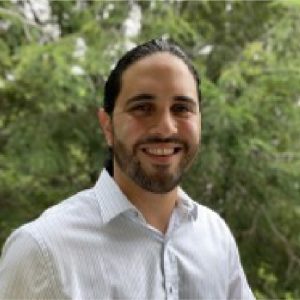
Pedro Matos Llavona
While pursuing his bachelor's degree in Geology at the University of Puerto Rico at Mayagüez, he assisted in the validation of High-Frequency Radars data (those located in Cabo Rojo and Ponce) and Acoustic Doppler Current Profiler data. After completing his bachelor’s degree, he continued research in coastal geology, in particular, he studied the deposits of the 1960 tsunami in south-central Chile as part of his master's studies at Central Washington University. Currently, as a Ph.D. student from the University of Massachusetts Amherst, he researches sedimentation in mangroves in Ceiba, Salinas, and Guayanilla, Puerto Rico, as well as sediments transported by Hurricane María to the Caonillas and Dos Bocas water reservoirs.
-

Estefanía Quiñones Meléndez
Obtained a bachelor’s in Mathematics and a Masters in Marine Science from the University of Puerto Rico, Mayagüez Campus. As an undergraduate she worked in the development of the Puerto Rico nearshore breaker height model and the beach hazard and current warning system. As a graduate student, she worked in the Longrarian drifter dispersion in the Mona Passage studying ocean currents and circulation patterns through the analysis of drifter location data to provide local dispersion coefficient for the region. This effort was possible thanks to a collaboration with the Caribbean Fisheries Management Council. Also, she was part of the Hydrodynamic Connectivity Study for the Marine Protected Area (MPA) Network of western P.R. where she developed and ran a two-dimensional particle tracking model to generate connectivity matrices between MPAs. In addition, she was part of research tracking offshore drifters deployed on Marine Protected Areas in western Puerto Rico. She also ran numerical simulation with the BOUSS 2D wave model for Palmas del Mar beach and analyzed outputs to identify rip current dangers. In her collaboration with the Marine Technology Society Student Chapter, she helped in the design, testing and deploying of eco-friendly near-surface drifters. Currently she is working on a Ph.D. in Ocean, Earth and Atmospheric Sciences (OEAS), with a concentration in Physics of Oceans and Atmospheres (POA), from the College of Earth, Ocean and Atmospheric Sciences (CEOAS) at Oregon State University in Corvallis, Oregon. Her work focuses on atmospheric soundings and stable water isotopic data from the Western Tropical Atlantic collected during the Atlantic Tradewinds Ocean–Atmosphere Mesoscale Interaction Campaign (ATOMIC). The research focuses on analyzing water exchanges in the sub-cloud boundary layer, especially when moist cold pools are present and enhance local evaporation.
Physics
-
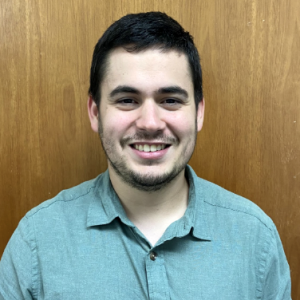
Giovanni Seijo-Ellis
He completed a Bachelor's degree in Theoretical Physics in 2016. As an undergrad student, he worked with the Seismic Network and Prof. Aurelio Mercado in the simulation of coastal flooding by tsunamis. After this experience, he collaborated with CARICOOS, in the validation of high-resolution ROMS using high-frequency radars and developed a high-resolution computational mesh for storm surge inundation simulations with an emphasis on the effect of natural barriers such as coral reefs on the risks of a flood. He later pursued graduate studies at the City University of New York (CUNY) where he also worked as an Adjunct Professor of Geological and Environmental Sciences. He is currently in his final year of his Ph.D. in Atmospheric and Oceanic Sciences at the University of Colorado - Boulder. His thesis focuses on the variability in the upper layer of the ocean with an emphasis on the Caribbean Sea. In collaboration with the Oceanography section at NCAR, he is developing one of the first regional configurations of CESM/MOM6 with which we will be able to carry out high-resolution simulations to study variability in the Caribbean under different climate scenarios.
-
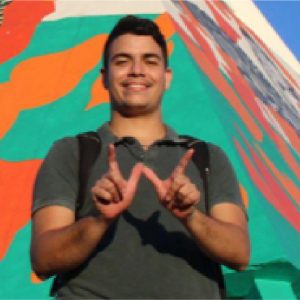
Luis Daniel Pérez Sequeo
As an undergraduate student, he participated in a research project that aimed to improve wind forecasts in Puerto Rico, using the WRF model. To do this, he ran several simulations of the WRF weather model, making changes in different physical parameters to obtain better wind forecasts in Puerto Rico. In addition, he collaborated in the validation of the wind stations model around Puerto Rico. Luis also assisted with the development of a domain of the XBeach hydrodynamic model to simulate waves on the coast of Rincón, Puerto Rico. Luis successfully completed his bachelor's degree in Physics and is currently working as a research assistant at the Oregon State University College of Engineering.
For more information about the research projects and/or theses carried out by our students, go to the Publications section.

